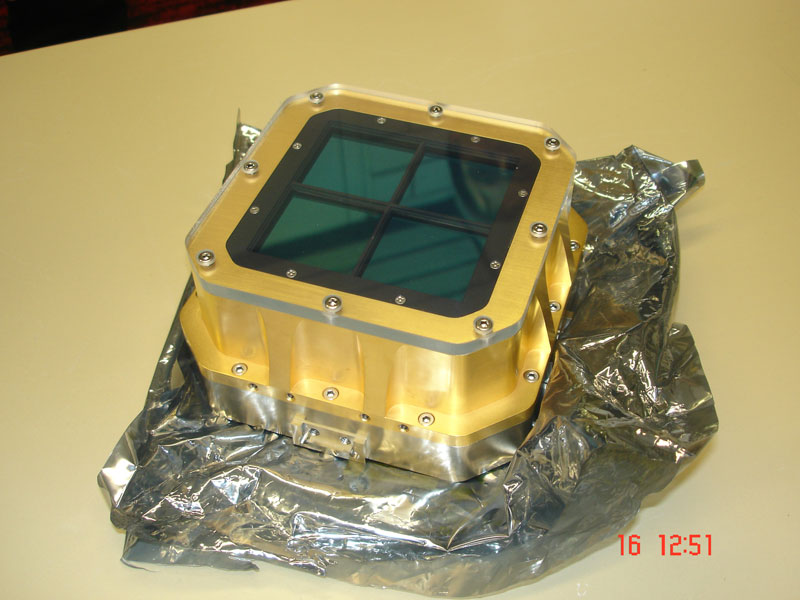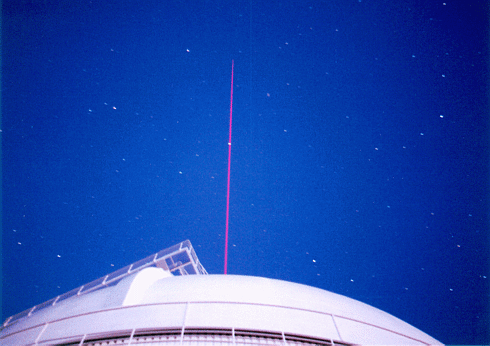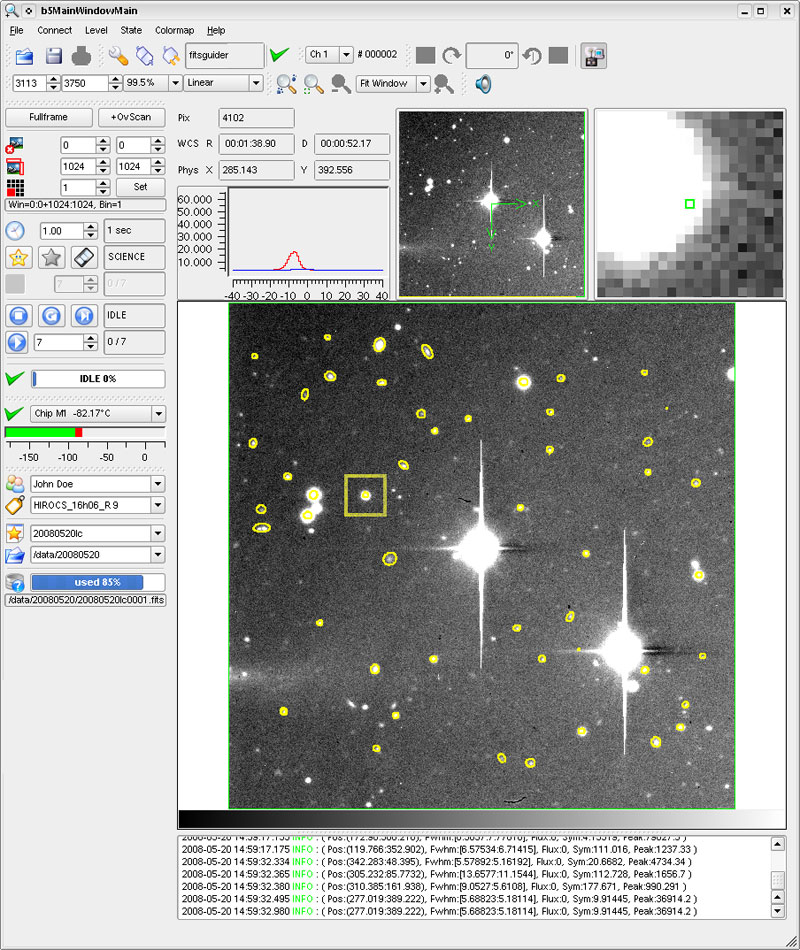| Version 22 (modified by , 10 years ago) (diff) |
|---|
The AstroTechTalk (ger) offers a place to discuss, for all interested colleagues and especially for the technical departments, the project leaders, the administration and the scientists as the ultimately users:
- status of instrumentation projects
- scientific tasks and features of the instruments in construction or planned
- new possible involvements
- technical innovations and developments
- technical problems and their solutions
- logistical problems and their solutions
- how to improve operation and observation
- project standards.
Time: Always Fridays 11:00 - 12:00
Location: Hörsaal
Outline:
- Announcements (news, visitors, etc.) (mainly in German)
- Talk of about 30 min about a selected topic (German or English, will be announced)
- Follow up discussion and questions (German or English, depending on the speaker)
Please send proposals for talks via e-mail to: gaessler, hofferbert - or also available in room 021 or 211.
| Date | Speaker | Topic |
| 12.09.2014 | Martin Kürster | The project landscape of the technical departments Here's another one of those funny names for a new instrument. But actually, what is it about? Do you also sometimes feel like this? Martin Kürster will give us an overview of the instruments we are building at MPIA. From this, we should be able to get the connection between those acronyms and the instruments. But not only that, after several years of heavy overbooking of the technical departments the mid-term future of the project landscape has recently become a bit unclear due to repeated delays of the European Extremely Large Telescope (E-ELT). Martin Kürster will also tell us about possible future initiatives, project acquisitions still under discussion, that will pose new challenges for the technical departments. Talk: German Slides: English Questions: German, English |
| 19.09.2014 | Ralf-Rainer Rohloff | Precision metal optics over a large temperature range Since long, metal optics are an important part of astronomical instruments. Often diamond turned mirrors of aluminum (Al6061) are used. But it is difficult to polish aluminum. Therefore, the mirror is coated with Nickle Phosphor layer, which can be polished more easily. This is very important at shorter wavelength. But the mirrors deform with temperature changes because of the different coeffient of thermal expansion between aluminum and NiP. Ralf-Rainer will tell us about a collaboration between MPIA Heidelberg and IOF Jean, which developed and tested a new material to minimize the temperature related deformation of such mirrors. The material consists of an aluminum silicate, which has a coefficient of thermal expansion close to NiP. Thus, the deformation could be reduced drastically. But now the work just started. Is it possible to built a mirror of this material? Does the material change with time? The best answer would be the study could show that such mirror can be built and are stable over time! Talk: German Slides: English Questions: German, English |
| 26.09.2014 | Tom Herbst | LINC-NIRVANA - the path to the telescope LINC-NIRVANA is an ambitious high resolution imager for the LBT, and it is currently the largest single instrument contribution at the MPIA. We are also the Principal Investigator institute, and hence are responsible for the complex integration and testing phase now underway. LN uses Multi-Conjugate Adaptive Optics (MCAO) for high-sky-coverage diffraction-limited imagery and (eventually) interferometric beam combination. The last two years have seen both successes and challenges. On the one hand, final integration is proceeding well in the lab. We also achieved First Light at the LBT with the Pathfinder experiment. On the other hand, funding constraints have forced a significant re-planning of the overall instrument implementation. Tom Herbst presents the progress and plans for bringing the remainder of the instrument online at the telescope in the next year. Talk: Englisch Slides: German?? Questions: German, Englisch |
| 03.10.2014 | -- | Tag der deutschen Einheit |
| 10.10.2014 | Casey Deen | Alignment challenges and strategies for the GRAVITY wavefront sensor cryostat and tower Aligning a handful of small mirrors,filters, and lenses with a laser shouldn't be so difficult, right? Surely no more than an afternoon! But after another week spent huddled in a dark laboratory, the light still does not end up in the correct position on the detector! In order to avoid this frustrating situation, an alignment strategy is an important part of building any instrument. Casey Deen presents the alignment concept for the GRAVITY wavefront sensor. This near-infrared sensor works on the Shack-Hartman Principle. Due to their wavelength range, near-infrared sensors have a larger selection of bright guide stars than do optical sensors, as most stars are brightest in the infrared. Optical light is also attenuated more by interstellar dust, making optical sensors impractical in dusty regions like the Galactic Center. The wavefront sensors are located in the Coude rooms of the Unit Telescopes of the Very Large Telescope (VLT). The location and the optical design of the wavefront sensors present severalchallenges for alignment. Casey and his colleagues present their strategy for alignment of the optics, and are looking forward to hearing opinions, advice and concerns from the assembled experts at MPIA. Expect a lively discussion and insight on what is laboratory work about! Talk: Englisch Slides: German Questions: German, Englisch |
| 17.10.2014 | Klaus Meisenheimer | PANIC |
| 24.10.2014 | Jacopo Farinato | SHARK - An optical integral field spectrograph and near-infrared coronagraph for the LBT |
| 31.10.2014 | -- | GAIA Challange |
| 07.11.2014 | Roland Gredel | LUCI - it goes even sharper Why became LUCIFER a girl? When does LUCI see with full sharpness? Actually, both twin near infrared spectrographs are already at the Large Binoculare Telescope for a while. Nevertheless, there is still some work to do and some parts of the instrument are still missing. Roland Gredel will update us about the last situation of the LUCI instruments. He will present exiting observation results of the last years and explain us how and when the instrument will reach its full capability. Running into trouble is not unusual building prototypes - as we do - and lessens learned from such a project are not only informative but also entertaining. Talk: German Slides: English Questions: German, English |
| 14.11.2014 | Stefan Meister | Azubipreise 2011-2014 |
| 21.11.2014 | Jörg-Uwe Pott | MICADO |
| 28.11.2014 | Oliver Krause | SPICA-SAFARI |
| 05.12.2014 | Aleksei Pavlov, Markus Feldt | SPHERE - how to find a planet |
| 12.12.2014 | Tom Herbst | All sky camera @LBT |
| 19.12.2014 | -- | Christmas party |
| 26.12.2014 | -- | Christmas |
Attachments (11)
- instrum8_gr.jpg (82.6 KB) - added by 10 years ago.
- instrum4_gr.jpg (104.4 KB) - added by 10 years ago.
- pedv3_gr.jpg (213.9 KB) - added by 10 years ago.
- alfa3.5.gif (235.6 KB) - added by 10 years ago.
- CIAO.jpg (3.8 MB) - added by 8 years ago.
- linc_nirvana_labor.jpg (255.2 KB) - added by 8 years ago.
- MATISSE.jpg (43.1 KB) - added by 8 years ago.
- miri_fm_filterwheel.jpg (145.6 KB) - added by 8 years ago.
- PACS-Chopper.jpg (80.0 KB) - added by 8 years ago.
- simple_loop.gif (965.4 KB) - added by 8 years ago.
- teaser.jpg (13.5 KB) - added by 8 years ago.
Download all attachments as: .zip




